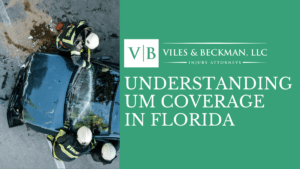When you ride your motorcycle in the fall, you feel a thrill like no other. You connect with the wind and sun and immerse yourself in rich fall colors. It’s a sense of freedom you won’t get from even the sportiest car. Unfortunately, as a biker, you accept a safety tradeoff each time you head out on the road. Riding a motorcycle is exciting, but you must share the road with risky drivers who don’t always take your safety seriously. We have compiled some motorcycle safety tips to help keep you safe on the road this fall.
Motorcycle Safety Tips Help Bikers Avoid Accidents and Injuries
In 2018, the National Highway Transportation Administration documented 4,985 biker fatalities nationwide. That’s fewer than in previous years, but it’s still a major concern. Based on miles traveled, bikers are still 28 times more likely to die in a fatal accident than a car or truck driver. It’s up to you to recognize the risks and remember the motorcycle safety tips that can help keep you safe.
Wear a DOT-Certified Helmet
When an accident occurs, helmets often make the difference between life and death. For bikers, it’s one of the few effective protections available. The Centers for Disease Control and Prevention estimates that helmets reduce a biker’s risk of death by 37%. They also decrease head injuries by 69%. Despite the added safety, some states allow bikers to make the helmet decision for themselves.
- 19 states and the District of Columbia have helmet requirements for all bikers and their passengers.
- Twenty-eight states have a helmet requirement for drivers up to ages 17, 18, or 21 and their passengers.
- Illinois, Iowa, and New Hampshire have no helmet requirements at all.
The helmet you choose should have a sticker certifying that it meets US DOT safety standards. Federal Transportation Code, 49 CFR 571.218, specifies the minimum performance requirements for fit, chinstraps, lining, and labeling. It further defines penetration, retention, and impact standards.
Get to Know Your New Motorcycle
As a biker, you respect your motorcycle like an old friend. It feels natural and safe, especially when you travel a familiar road. You know how to control it on slick roads, wet fall leaves, and dangerous curves. You understand how it maneuvers in traffic and how your brakes respond to sudden demands. That sense of safety and familiarity often shifts when you upgrade to a new bike. Even if you’ve been riding a long time, the NHTSA offers these new motorcycle safety tip:
- Practice operating your Motorcycle
- Ride it in a “…controlled area…” until you feel comfortable heading out on the road.
Whether it’s a seasoned bike or fresh off the showroom floor, each motorcycle has its own character and feel. That’s often due to differences in power or responsiveness. The cycling website, RideApart.com, explains performance differences in terms of “…rake, trail, and offset…” These complex elements of steering geometry define how your bike performs on the road. A new motorcycle’s brakes function uniquely as well.
You don’t have to study or even know the technical details. Practice-riding your new cycle off the road is the best way to make the adjustment to a new performance dynamic.
Expect More, Receive More: Legal Support That Feels Like Family
Older Bikers Should Consider Safety Training
If you’re a Boomer, you might not want to hear this, but Boomer bikers are involved in more accidents than other riders. Several studies have confirmed this conclusion. When the Insurance Institute for Highway Safety analyzed NHTSA data, they determined that age 50 plus riders were involved in 37% of all fatal motorcycle accidents.
A 2016 motorcycle mortality study conducted by the Epidemiology Department at Columbia University took the analysis a bit further. They attributed the higher fatality numbers to a trend that began when Boomer bikers were in their twenties. Their study determined that Boomer fatality rates were consistently 48% higher than other bikers.
If you’re a mature biker, you shouldn’t let this trend stop you from riding. The authors of the mortality study offer two motorcycle safety tips.
- All Boomer bikers should have road safety training.
- “Re-entry” bikers should have safety training if they return to biking after an absence.
Recognize that Other Drivers Might Not “See” You
When the National Transportation Safety Board conducted a controlled motorcycle accident causation study, they documented these trends.
- When a crash involved another vehicle, the other driver was at fault over half of the time.
- The other drivers’ “perception failures” caused 56% of the accidents.
Vehicle/motorcycle crashes often occur because a motorist fails to “see” a motorcyclist. These perception failures occur because motorcycles aren’t noticeable enough in traffic, often because of size. Also, drivers don’t notice dangerous situations with motorcycles as they are occurring. Motorcyclists have perception issues as well. Often, they don’t recognize pending danger within the few seconds available to avoid a crash. The NTSB study presented these key recommendations.
- Motorcyclists’ licensing training should teach new bikers to recognize a dangerous situation before it causes harm.
- Vehicle manufacturers should modify collision warning systems to make them more sensitive to motorcycles and other less conspicuous vehicles.
- Motorcycle manufacturers should develop motorcycle braking and stability technology.
The NHTSA sponsors an annual Motorcycle Awareness safety campaign. Safety materials and PSAs focus on sharing the road with motorcyclists and avoiding accidents.
Be Cautious at Intersections
The NTSB causation study found that vehicle/motorcycle accidents occurred most frequently at intersections. In 30% of the accidents studied, vehicle drivers made a left turn in the motorcycle rider’s path. In 28% of the accidents studied, motorcyclists laid down their bikes while attempting to avoid a collision.
As a biker, you are far more vulnerable to injury or death. Even if you have the right of way, you should slow down and scan oncoming traffic before entering an intersection.
Contact a Motorcycle Accident Attorney
If you’re injured in a motorcycle accident that’s someone else’s fault, you should consult with a motorcycle accident attorney immediately. Motorcyclists often encounter issues beginning at an accident scene. Car and truck drivers sometimes refuse to recognize or acknowledge their negligence. Insurance companies often handle injury claims based on their insured’s inaccurate or biased perceptions. A motorcycle accident attorney deals with vehicle drivers and their insurance companies. Here at Viles & Beckman, we understand your rights and work to protect them from day one. Contact us today for your free case evaluation.
Call or text (239) 334-3933 or complete a Free Case Evaluation form






